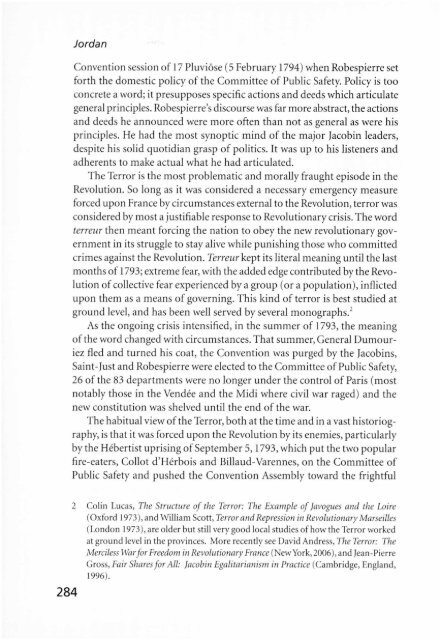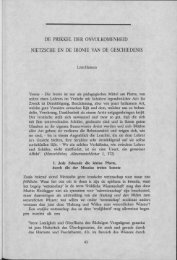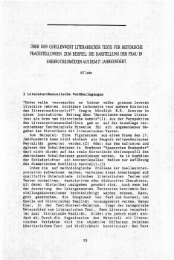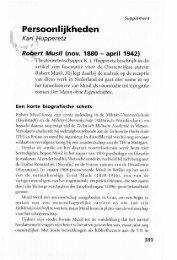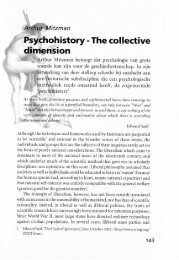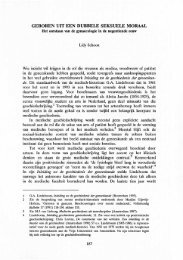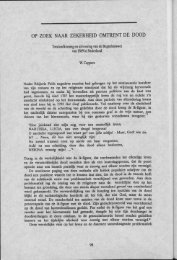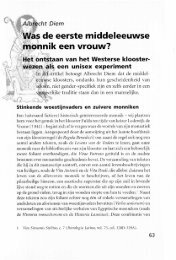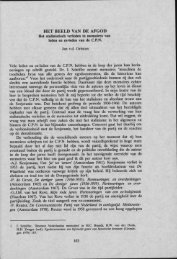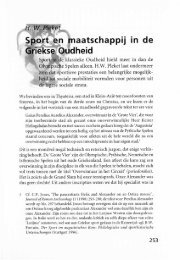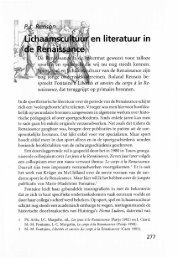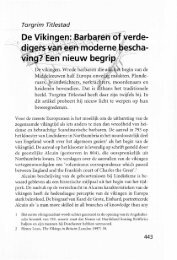Robespierre's revolutionary etoric - Groniek
Robespierre's revolutionary etoric - Groniek
Robespierre's revolutionary etoric - Groniek
You also want an ePaper? Increase the reach of your titles
YUMPU automatically turns print PDFs into web optimized ePapers that Google loves.
284<br />
Jordan<br />
Convention session of 17 Pluvióse (5 February 1794) when Robespierre set<br />
forth the domestic policy of the Committee of Public Safety. Policy is too<br />
concrete a word; it presupposes specific actions and deeds which articulate<br />
general principles. <strong>Robespierre's</strong> discourse was far more abstract, the actions<br />
and deeds he announced were more often than not as general as were his<br />
principles. He had the most synoptic mind of the major Jacobin leaders,<br />
despite his solid quotidian grasp of polities. It was up to his listeners and<br />
adherents to make actual what he had articulated.<br />
The Terror is the most problematic and moraUy fraught episode in the<br />
Revolution. So long as it was considered a necessary emergency measure<br />
forced upon France by circumstances external to the Revolution, terror was<br />
considered by most a justifiabie response to Revol utionary crisis. The word<br />
terreur then meant forcing the nation to obey the new <strong>revolutionary</strong> government<br />
in its struggle to stay alive while punish ing those who committed<br />
crimes against the Revolution. Terreur kept its literal meaning until the last<br />
months of 1793; extreme fear, with the added edge contributed bythe Revolution<br />
of collective fear experienced by a group (or a population), inflicted<br />
upon them as a means of governing. This kind of terror is best studied at<br />
ground level, and has been weU served by several monographs. 2<br />
As the ongoing crisis intensified, in the summer of 1793, the meaning<br />
of the word changed with circumstances. That summer, General Oumouriez<br />
fled and turned his coat, the Convention was purged by the Jacobins,<br />
Saint-Just and Robespierre were elected to the Committee of Public Safety,<br />
26 of the 83 departments were no longer under the control of Paris (most<br />
notably those in the Vendée and the Midi where civil war raged) and the<br />
new constitution was shelved until the end of the war.<br />
The habitual view ofthe Terror, both at the time and in a vast historiography,<br />
is that it was forced upon the Revolution by its enemies, particularly<br />
by the Hébertist uprising ofSeptember 5,1793, which put the two popuI ar<br />
fire-eaters, Collot d'Hérbois and Billaud-Varen nes, on the Committee of<br />
Public Safety and pushed the Convention Assembly toward the frightful<br />
2 Colin Lucas, The Strueture of the Terror: The Example of javogues and the Loire<br />
(Oxford 1973), and William Scott, Terror and Repression in Revolutionary Marseilles<br />
(London t973), are older but still very good local studies ofhow the Terror worked<br />
at ground level in the provinces. More recently see David Andress, The Terror: The<br />
Merciless War for Freedom in Revolutionary France (New York, 2006), and jean-Pierre<br />
Gross, Fair Shares for All: }acobin Egalitarianism in Praetice (Cambridge, England,<br />
1996).


